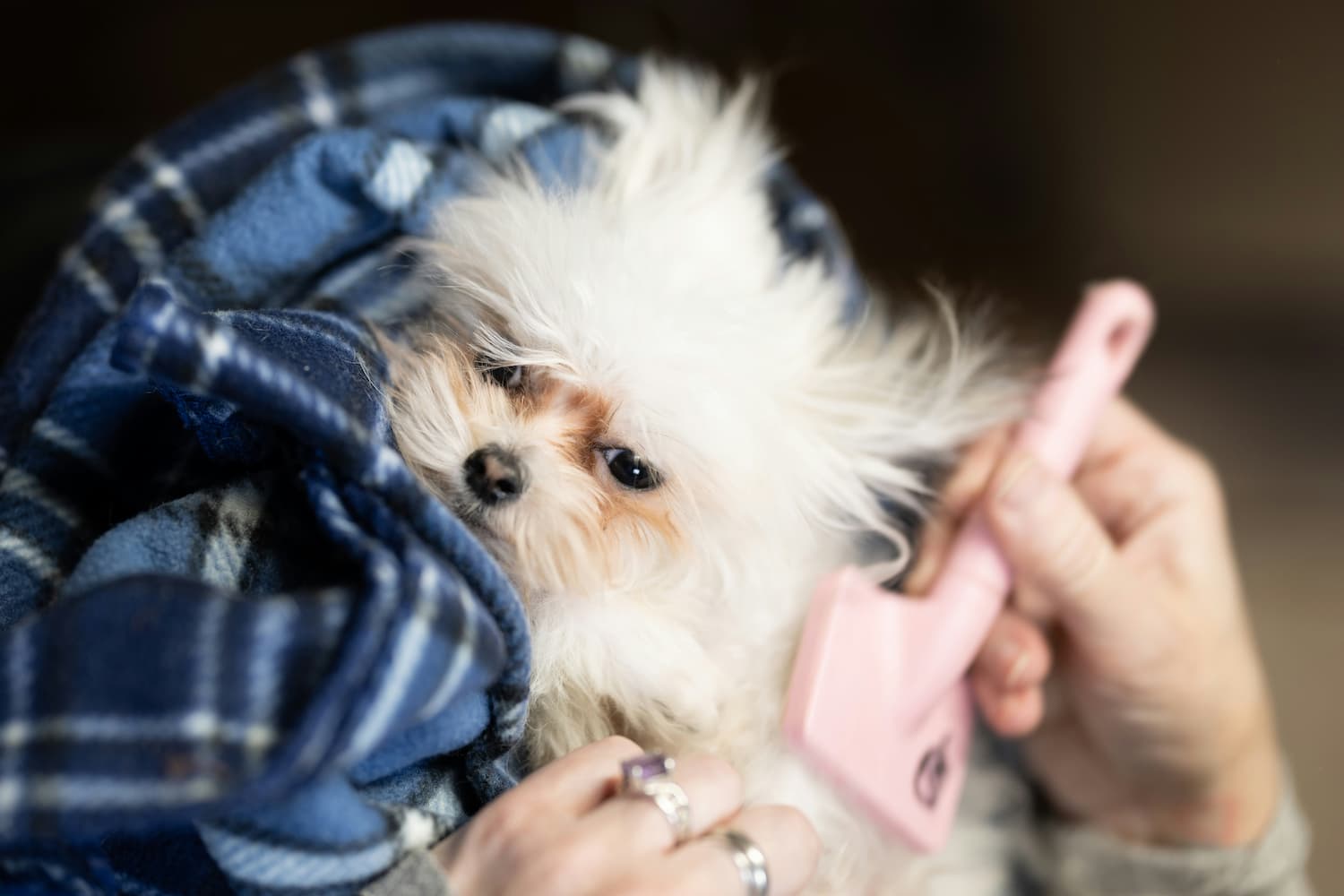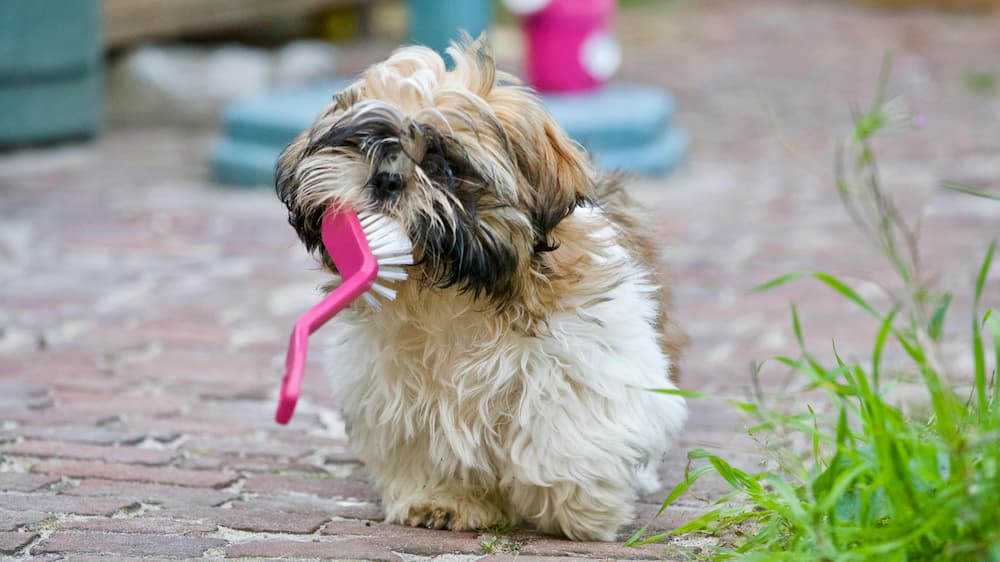Dogs love playing outdoors, but all that fun can leave them muddy and smelly. As a new dog owner, you might ask yourself “how to bathe a dog” without turning bath time into a stressful chore. In the sections ahead, we’ll cover why dogs need baths, how often to bathe a dog, and what dog-safe shampoo and supplies you’ll need. You’ll learn exactly how to wash your dog safely—making bath time a positive experience for both of you. Read on and soon you’ll be bathing your dog with confidence!
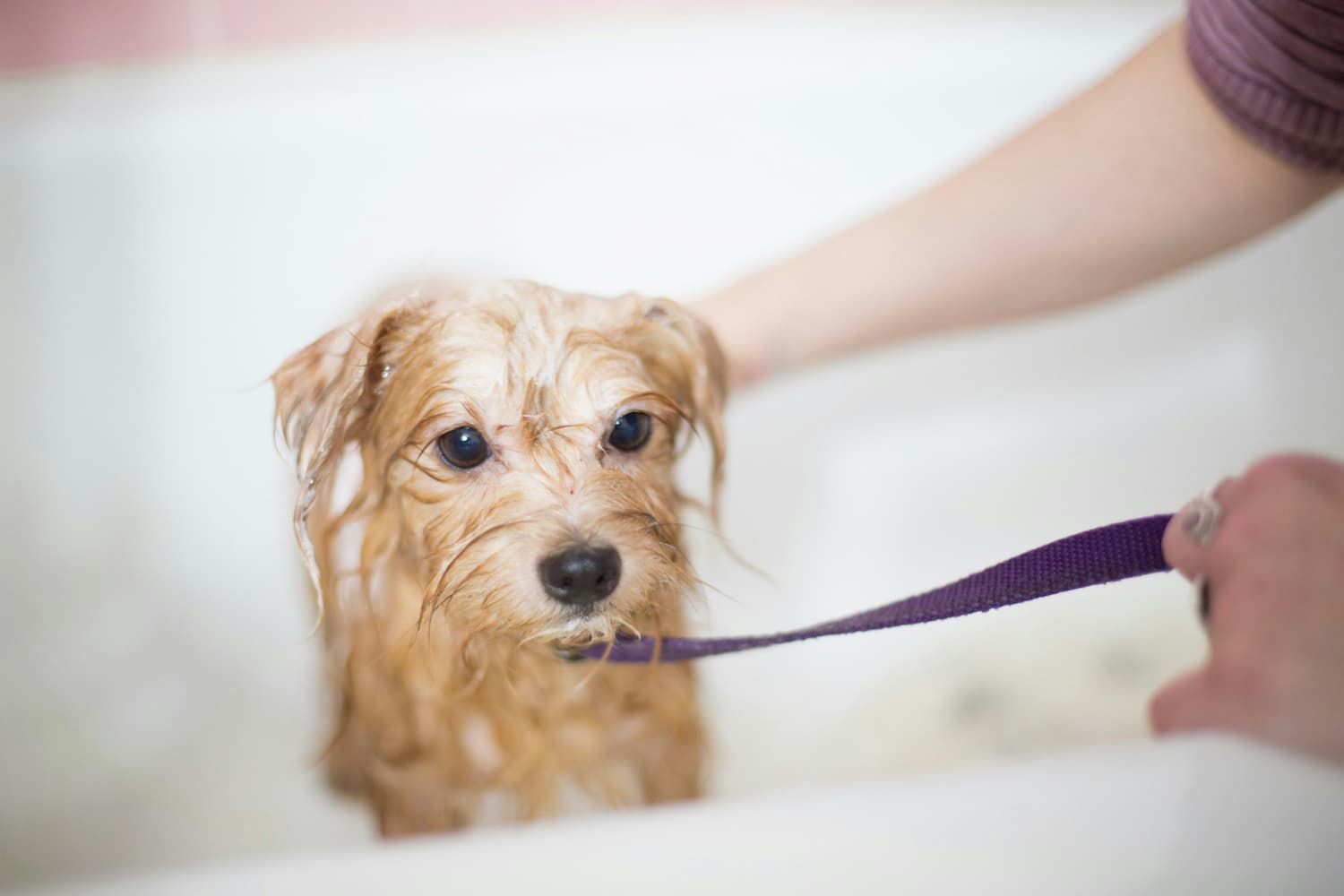
Why Do Dogs Need Baths?
Dogs aren’t naturally foul-smelling, but their skin and fur do pick up dirt, debris, allergens and oils over time, Bathing your dog removes this buildup, Clean fur also sheds less hair around the house. Moreover, dogs can get skin problems or parasites (like fleas or mites) that baths help control. Infections and parasites can hide in the coat, so a good bath (or medicated shampoo when advised by a vet) helps prevent issues. In short, regular baths keep your dog smelling good, reduce allergens, and guard the skin (a dog’s largest organ) from irritation or infection.
How Often Should You Bathe Your Dog?
There’s no one-size-fits-all answer. For most dogs, about once a month is ideal, but the exact schedule depends on your dog’s breed, coat, skin and lifestyle. Puppies, seniors or dogs with skin conditions often need special bathing routines. Here are factors that affect how often to bathe a dog:
Remember: “how often to bathe a dog” can vary from once a week to a few times a year, depending on these factors. When in doubt, sniff the coat and look for visible dirt-if your dog smells or looks dirty, it’s probably time for a wash. And always avoid hot water or rushing-use lukewarm water and gentle handling to keep the experience safe and comfortable.
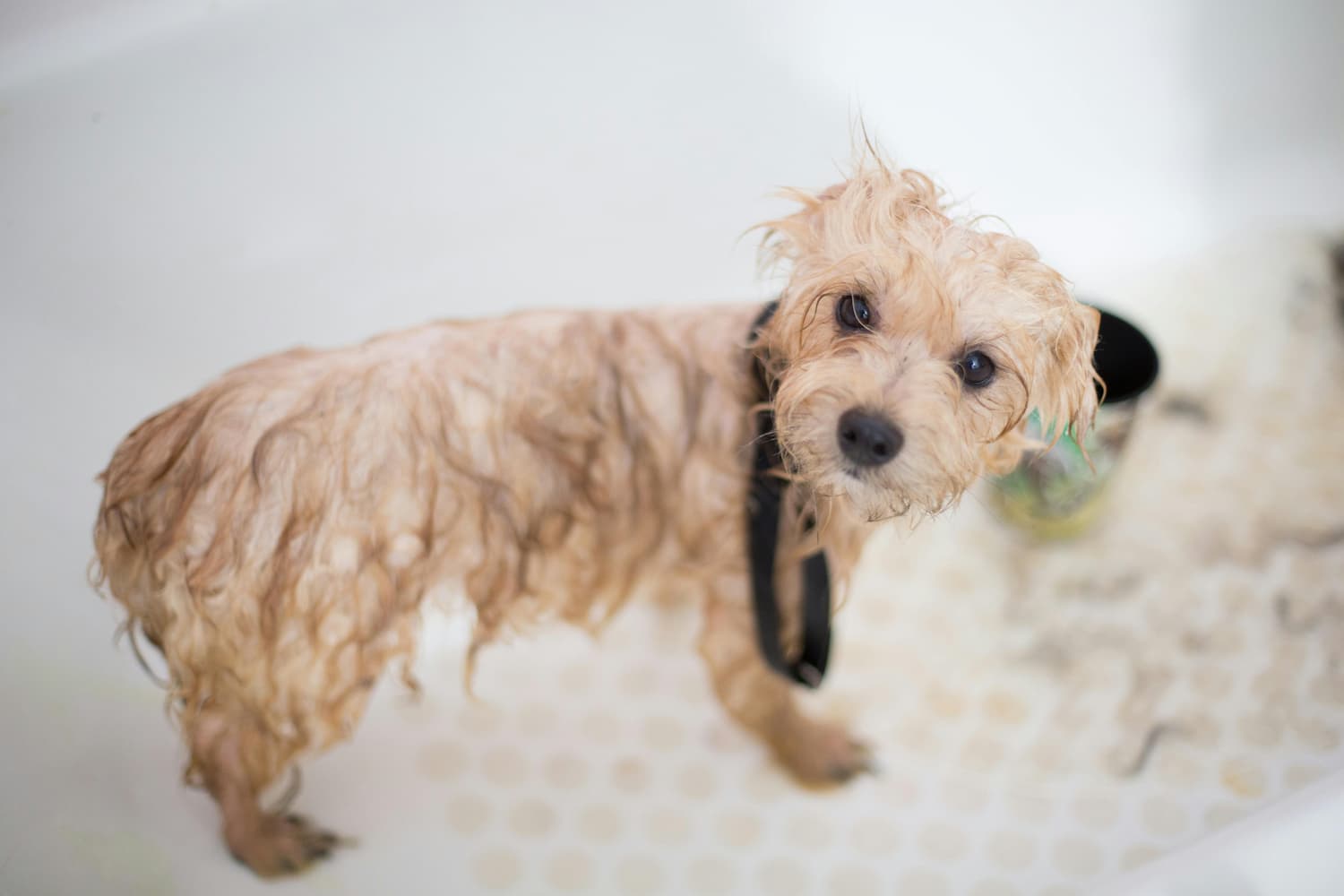
What Do You Need to Bathe a Dog?
Gather all your supplies before you start. Having everything at hand helps the bath go smoothly and safely. For a successful dog bath, you’ll need:
By laying out these items first (including any towels, treats, and toys), you can focus on your dog during the bath instead of scrambling around. One author suggests even prefilling the tub partway to avoid extra stress from running water. With supplies ready and a safe setup, you’re prepared to bathe your dog step by step.
How to Bathe a Dog Step-by-Step?
Let’s break the process into clear steps you can follow with your own pet:
1.Brush Thoroughly: Before getting your dog wet, brush out the coat. This removes loose hair and detangles mats, making lathering easier. It also helps minimize shedding fur in the tub. Give extra care to long fur and any mats.
2.Wet the Dog: Use lukewarm water to wet your dog’s entire body. Check the water on your wrist first – it should feel comfortably warm, not hot. Starting at the neck, move down toward the tail and legs, avoiding the head for now. Fill the coat evenly so it’s soaked; this helps the shampoo spread well. (If your dog is nervous, you can rinse with a pitcher or gentle spray rather than a strong stream of water.)
3.Apply Shampoo: Squeeze a measured amount of dog shampoo into your palm or directly on the back. Rub it into the coat from the neck down, massaging gently until it foams. Be careful not to get shampoo in the dog’s eyes or inside the ears. For the face, use a wet washcloth and a tiny bit of shampoo to wipe around the muzzle and cheeks. Pay special attention to dirty areas like the chest, belly, paws and under the tail. Always follow any instructions on medicated shampoo labels.
4.Rinse Completely: Rinse your dog thoroughly with clean, lukewarm water. Continue rinsing until the water runs clear and no soap remains on the coat. Any leftover residue can irritate the skin. Lift all of the dog’s legs and check under the belly and tail to ensure no soap is hiding in creases. Keep a gentle flow of water; covering the dog’s eyes with your hand is fine, and tilt the head up so water washes away from the face.
5.Dry Gently: Once rinsed, turn off the water and take your dog out of the tub carefully. Wrap them in a towel and gently pat the fur dry to remove excess water. Avoid rough rubbing, which can tangle fur or irritate skin. You may need a second towel for a big or long-haired dog. If your dog tolerates it and it’s safe, you can use a pet-specific hair dryer on a low, cool setting (holding it at least a foot away) to finish drying, especially in cold weather. Otherwise, allow them to shake off water and air dry in a warm room. Reward your dog with praise or treats at the end so they associate bath time with something positive.
Throughout each step, speak calmly and give reassurance so your dog stays relaxed. Take your time—pausing to comfort or distract your pet is fine. After drying, give your dog a quick brush to catch any loose fur and make the coat neat. With practice, these steps will become an easy routine.
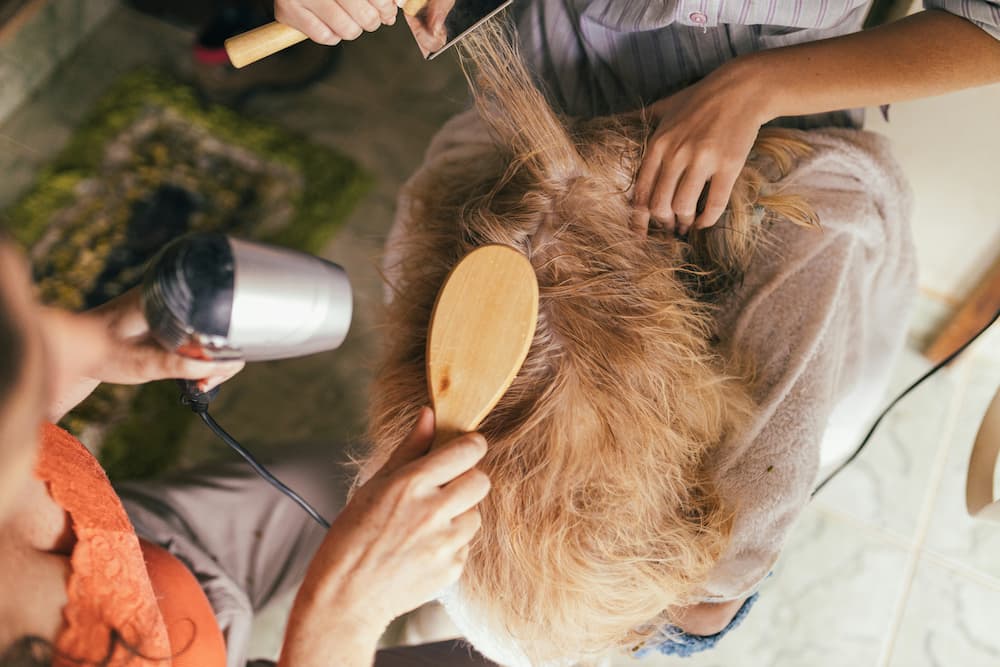
Bathing Techniques for Dogs
Conclusion
Learning how to bathe a dog is an essential skill for every pet parent. By understanding why do dogs need baths, how often to bathe your dog, and following the step-by-step guide, you can turn a potentially stressful task into a bonding experience. Remember, every dog is different—some may love splashing in the water, while others need extra reassurance. With the right supplies, gentle techniques, and plenty of treats, you’ll keep your dog clean, healthy, and happy. Regular baths not only maintain their coat and skin but also strengthen the trust between you and your furry companion. So grab your supplies, take a deep breath, and make bath time a positive ritual for both of you.
FAQ
How can I bathe a dog that hates water?
Start by desensitizing them to water gradually. Let them explore an empty tub with treats, then add a small amount of water. Use a slow, gentle stream and avoid spraying directly on their face. Offer high-value treats during and after the bath, and keep sessions short. Over time, they’ll learn to associate water with positive rewards.
Can I use human shampoo on my dog?
No, human shampoo is not safe for dogs. Dogs have a more neutral skin pH (around 6.2–7.4) compared to humans (4.5–5.5). Using human shampoo can disrupt their skin’s natural balance, leading to dryness, irritation, or infections. Always use a shampoo specifically formulated for dogs.
How to bathe a dog without a bath?
For quick cleanups, use pet wipes designed for dogs to wipe down their coat. You can also use a damp cloth with a small amount of dog shampoo for spot cleaning. For a “dry bath,” try a waterless dog shampoo—apply it, massage into the coat, and brush out excess. These methods work well for dogs who hate full baths or when you’re traveling.
What not to do when bathing a dog?
Avoid these common mistakes: using hot water (it can burn or stress your dog), getting water in their ears (use cotton balls to protect them), rushing the process (take time to rinse thoroughly), and scolding them if they get anxious (this will make future baths harder). Never bathe a dog immediately after exercise—wait 1–2 hours to let their body temperature cool down.

